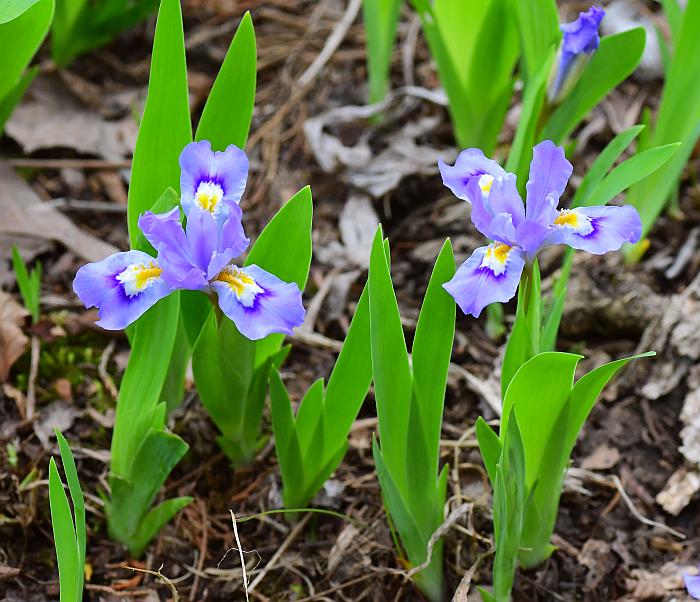Iris cristata Aiton
Crested Iris

Native
CC = 8
CW = 5
MOC = 12
© SRTurner
Iris cristata AitonCrested Iris | |
 |
Native CC = 8 CW = 5 MOC = 12 |
© SRTurner |
|
Family - Iridaceae Habit - Rhizomatous perennial forb, the rhizomes alternating between slender and conspicuously thickened portions.
Stems - Ascending to erect, very short, less than 4 cm, much shorter than the leaves. Leaves - Mostly basal, 10-30 cm long, 9-20 mm wide, continuing to elongate after flowering, erect or somewhat arching.
Inflorescence - One per aerial stem, terminal, with 1-2 flowers, the spathelike bracts subequal, 4-7 cm long, herbaceous, green.
Flowers - Sepals 6-10 cm long (including the fused portion), widely spreading or arching downward, obovate, with a conspicuous, fringed, petaloid crest, green to greenish brown in the fused portion, the remainder blue to light purple (rarely nearly white), the crest yellow, bordered with a white area, and outlined with a narrow purple margin. Petals somewhat shorter and narrower than the sepals, spreading, blue to light purple (rarely nearly white).
Fruits - Capsules 1-2 cm long, ovoid, 3-angled, with a single rib at each angle.
Flowering - April - May. Habitat - Rocky woods, bluffs, sandy streambanks, often on cherty or dolomitic substrate. Origin - Native to the U.S. Lookalikes - I. brevicaulis, I. virginica. Other info. - This little species can be found in about ten Ozark counties in the southeastern portion of the state. It is endemic to a region extending mostly eastward from Missouri and not quite reaching the Atlantic coast, though it is also cultivated in Europe. It is one of the smaller of Missouri's irises, having virtually no stem. This aspect, the flower color, and the distinctive sepal crests (see photo above) are sufficient for identification. The rhizomes of the plant are also very characteristic, having constricted and expanded portions. This species grows well from seed and should not be gathered from the wild. Photographs taken in Brown Summit, NC., 4-23-02, and in Lochapoka, MO., 4-16-05 (DETenaglia); also southeast of Crane Lake, Iron County, MO, 4-13-2017, and at Shaw Nature Reserve, Franklin County, MO, 4-27-2021 and 4-24-2022 (SRTurner); also in St. Louis County, MO, 8-1-2023 (KBildner). |